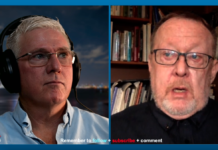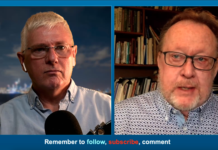Source: The Conversation (Au and NZ) – By Thalia Anthony, Professor of Law, University of Technology Sydney
The 17 socioeconomic targets in the Closing the Gap report intend to reduce the incarceration rate of First Nations people. Despite this, according to the recent Productivity Commission update on the Closing the Gap targets, First Nations incarceration rates are still rising.
Over the past 30 years, incarceration rates have more than doubled to unprecedented levels for First Nations people. Yet, violent offending convictions for Aboriginal people have decreased in NSW and across Australia.
This could be due to entrenched racism in the justice system. Sentencing courts are key gatekeepers for prisons and are therefore, in part, accountable for the high rates of First Nations incarceration.
What is required in sentencing is a process of “re-storying”, or truth-telling. Aboriginal storying in sentencing promotes the principles of truth-telling by placing power in the hands of the Aboriginal person and their community to tell their story.
Through this, non-custodial pathways can be identified, drawing on the person’s strengths and community avenues for healing. Re-storying provides resistance to racist stereotypes in courts that contribute to the over-incarceration of Aboriginal people.The Aboriginal and Torres Strait Islander Healing Foundation notes that laying bare the truths of Aboriginal people is a way to counter and expose racism.
There must be a process for truth-telling in sentencing that compels action. However, there also needs to be systemic change that recognises prisons as a harm rather than a solution for First Nations people.
It is also critical that courts recognise and redress their role in over-incarceration, which the Canadian Supreme Court has begun to do. This includes critically reflecting on how unconscious bias can influence judicial decision-making.
Read more:
Australia’s news media play an important role reminding the country that Black lives still matter
A history of assuming guilt influencing criminal justice systems
Casting Aboriginal people as criminals has been happening since the earliest days of colonisation when Aboriginal people were deemed outcasts on homelands.
Ambēyaŋ scholar Callum Clayton Dixon identifies how Aboriginal peoples were “officially deemed criminals by colonial authorities” to justify colonial land takeover of a sovereign people.
Governor George Arthur in NSW claimed ahead of a military attack on Aboriginal people in 1828,
The Aboriginal natives of this colony are and ever have been a most treacherous race.
In 1839, the Sydney Herald reported:
…if strong measures be not soon adopted, these ruthless savages will go on, adding one crime to another.
Today, the legal narrative of Aboriginal people’s offending – laid bare in prosecutor’s statements – is worsened by the assumption and measurement of criminal “risk”.
The language and measurements of risk inform pre-sentence reports prepared for courts by community corrections. They use a deficit metric to influence decisions on sentencing. Rather than identifying strengths, community corrections treat First Nations peoples’ backgrounds and circumstances as a problem.
Australian and Canadian research has found that such reports reinforce racist assumptions about First Nations people.
A risk framework focused on perceived deficits of Aboriginal people positions them, according to Munanjahli and South Sea Islander woman and health professor Chelsea Watego and colleagues, as “in need of ‘fixing’ and ‘moulding’ (usually by white hands).”
Deficit narratives in sentencing
Listening to the life stories of First Nations people on their terms provides an antidote to the usual deficit narrative in courts.
This approach is adopted in Canadian Gladue reports, which are First Nations-narrated pre-sentence reports. They illustrate the First Nations person’s holistic circumstances and needs, including how they have been failed by the system. These have the potential to reduce prison sentences, according to the Canadian Truth and Reconciliation Commission.
This approach is also being implemented by the Victorian Aboriginal Legal Service through Aboriginal community justice reports. This initiative draws on the lessons of the Aboriginal Legal Services of Toronto when it established Gladue reports.
The Victorian Aboriginal Legal Service, an Aboriginal community-controlled organisation, bears witness to how Aboriginal voices are stifled in sentencing courts, and their lives reduced to the sum of criminal histories and risks. Promoting First Nations strengths and self-determination in truth telling is at the heart of its work. This includes through re-storying in sentencing.
Reflecting on the role of the Yoo-rrook Commission (Victoria’s truth-telling process), CEO Nerita Waight articulated:
Self-determination is the only way Aboriginal people will ever get justice. Self-determination is too often stifled by bureaucracies that exclude or sideline Aboriginal voices.
The role of Aboriginal community justice reports
Aboriginal community justice reports were recommended by the Australian Law Reform Commission in its 2017 inquiry into First Nations over-incarceration.
Aboriginal community justice reports seek to provide a more complete picture of a person’s life and circumstances. They endeavour to amplify the aspirations, interests, strengths, connections, culture, and supports of the individual, as well as the adverse impact of colonial and carceral systems on their life.
The Victorian Aboriginal Legal Services began a trial using these reports this year. Twenty will be produced over the next two years by Aboriginal report writers who are working with the Aboriginal person before the court. The person’s own words and experiences will form the substance of the reports.
This approach acknowledges the Aboriginal person is the expert in their own journey, and conveys the person’s circumstances and a deeper understanding of their life, ties to family, community, ancestors and their involvement with government institutions.
Reports will be trialled in the County Court – both Koori County Court and mainstream criminal division. Aboriginal people who request a report will also receive support from Aboriginal caseworkers to build their own path forward.
The process of speaking “one’s own voice” with an Aboriginal worker preparing the report is intended to restore dignity and empower the person to take responsibility and a lead role in their healing, rather than just be judged.
Moving forward with truth telling and re-storying practices
Aboriginal community justice reports are part of a growing momentum for Aboriginal narrative reports in sentencing.
In addition to Victoria, Aboriginal and Torres Strait Islander organisations in other parts of Australia, including Five Bridges in Queensland and Deadly Connections in New South Wales, are taking the lead in producing reports that involve truth-telling in sentencing.
However, truth-telling needs to involve systemic change. The Aboriginal community justice reports coincide with the self-determination work of the Victorian Aboriginal Legal Service and other Aboriginal organisations to build community programs and advocacy that pushes back on colonial carceralism.
This is true to First Nations radical scholarship that heeds,
Processes of re-storying and truth-telling are not effective without some larger community-centred, decolonising actions behind them.
![]()
Thalia Anthony receives funding from the Australian Research Council.
Andreea Lachsz is Head of Policy, Communications and Strategy at the Victorian Aboriginal Legal Service.
Nerita Waight is the Chief Executive Officer of the Victorian Aboriginal Legal Service.
– ref. The role of ‘re-storying’ in addressing over-incarceration of Aboriginal and Torres Strait Islander peoples – https://theconversation.com/the-role-of-re-storying-in-addressing-over-incarceration-of-aboriginal-and-torres-strait-islander-peoples-163577







